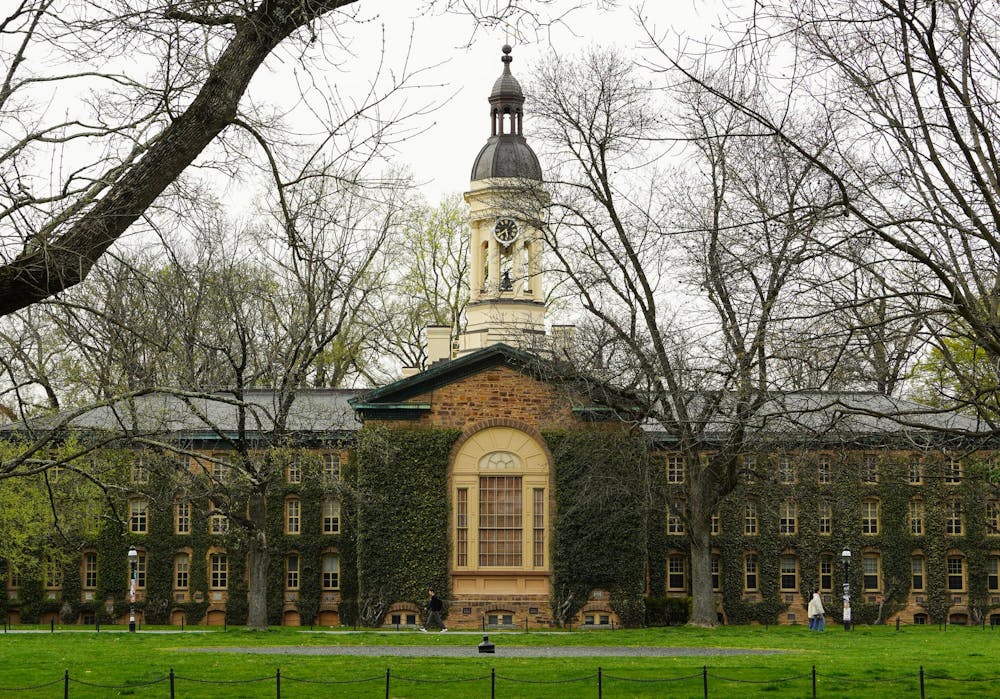As a student at a competitive public high school, affirmative action was first mentioned to me in order to discount the college acceptances of my Hispanic and Black peers. A Latina myself, I had two questions. First, as a soon-to-be applicant to competitive universities, I wondered if it was really true that I’d be given a boost in admissions. And second, as the daughter of highly educated Venezuelan and Lebanese immigrants, I wondered why I deserved that boost for parts of my identity over which I had no control. Since then, the more I have learned about race-based affirmative action, the less convinced I have been that any of its mainstream justifications — establishing diversity on campuses, rectifying past wrongs, and correcting for unequal opportunity — have merit.
One of affirmative action’s alleged justifications is that affirmative action is necessary for ensuring the diversity of student bodies. The first problem with this argument is that it assumes how a student will contribute to their college campus is necessarily related to their race. Specifically, after the Students for Fair Admissions v. Harvard and University of North Carolina (UNC) decisions were released, President Christopher Eisgruber ’83 claimed that “diversity benefits learning and scholarship by broadening the range of questions, perspectives, and experiences brought to bear on important topics throughout the University.” This confounds three different aspects of individuals: their race, their experiences, and their opinions, suggesting that all individuals of a certain race share the same perspectives, which differ from their white counterparts.
The reality is that underrepresented minorities have a variety of backgrounds; growing up Hispanic in a wealthy Boston suburb is vastly different from growing up Hispanic in South Boston. Additionally, minorities’ worldviews are diverse, as demonstrated by the two Black Supreme Court justices, Ketanji Brown Jackson and Clarence Thomas, positing starkly different opinions on the matter of affirmative action. Different experiences may lead to different perspectives; even similar experiences may lead to different perspectives. The lives and perspectives of underrepresented minorities vary greatly, and it’s essential not to make assumptions about them.
Although I’m incredibly proud of my heritage, and growing up in a household of fusions has shaped me in many ways, the same is true for my best friend who is Russian and Jewish. Why should my background be more important than hers?
Instead of trying to approximate the experiences one has had and their subsequent perspectives on important societal topics from an applicant’s race, there already exist other methods for ensuring that college campuses are diverse — essays. If an applicant’s worldview has been influenced by their racial background, their essay is a perfect medium for illustrating this, eliminating the need for admissions officers to assign judgements on the basis of race. Indeed, one of Princeton’s supplemental questions asks students: “In short, how has your lived experience shaped you?”
However, even if it is true that allowing race to be used in admissions does result in the most diverse student body, this policy uses Hispanic and Black students as a means to an end. The entire “diversity” justification for affirmative action is unfair to Hispanic and Black students: they are reduced to their race to create an environment that will widen their white peers’ minds. Thus, taking race-based affirmative action at its best — promoting racial diversity — it is a policy that instrumentalizes and discriminates against Hispanic and Black students.
The second prominent justification for affirmative action is that it serves as a mechanism by which powerful institutions that play a role in institutional racism can rectify not only their, but the entire country’s, injustices. Though highlighting the role institutions play in atrocities is important for progressing as a society, the answer to this country’s mistakes is not a shortsighted policy that employs broad racial categories to ineffectively reach individuals who have been harmed by the policies that universities seek to ameliorate.
Specifically, the reparations argument is not compatible with every individual who benefits from race-based affirmative action. Not every Hispanic or Black applicant has ancestors who were in this country decades ago and experienced institutional racism. For instance, it is unclear what elite universities owe to white Hispanics, like me, with educated immigrant parents. Similarly, while there are many Black students whose ancestors were irrevocably harmed by former American policies, there are also plenty of Black students who do not fit into this category. These include immigrants or children of immigrants from African countries or the Caribbean islands, who, according to a 2007 Princeton and University of Pennsylvania study, make up 41 percent of the Black student populations at Ivy League institutions. Similarly, a 2004 Harvard study found that just around one-third of Black students at Harvard had four grandparents born in the United States. If elite universities intend to right America’s past wrongs with affirmative action, the beneficiaries of such a policy should be chosen carefully — they must be shown to have been injured by the policies for which the university aims to apologize.
The third and strongest justification for affirmative action is that adjusting admission criteria corrects for unequal access to opportunities that influence college admission — essentially, leveling the playing fieldfor underrepresented minorities. However, this implies that race is the primary causal driver for racial achievement gaps. It is true that race is strongly correlated with SAT scores: Hispanic students tend to score lower on standardized tests than White students. But lower test scores are not innate to being Hispanic; it is not the case that Hispanic students are intellectually inferior to white students. So what is responsible for the gap across races?
A 2015 UC Berkeley study found that between parental education, family income, and race, racial differences mattered the most for the racial SAT score gap. One possibility is that someone’s skin color has a direct effect on their score. However, other factors, such as neighborhood, difficulty of curricula, and teacher-to-pupil ratios — which weren’t included in this study — may be hiding within the race bucket. It seems more plausible that context, which is related to race due to historical reasons, matters, as opposed to simply the color of one’s skin. As such, race shouldn’t be used as a proxy for disadvantage — specific circumstances, not skin color directly, determine this. Overall, a holistic understanding of an individual’s environment is needed to contextualize their SAT score. For instance, a wealthy Black boarding-school-educated student and a poor white student at an underfunded public school with a single mother will have SAT scores informed by their environments in vastly different ways. Critically, a 2022 study by Duke economist Peter Arcidiacono found that for Harvard and UNC, high socioeconomic status underrepresented minorities are afforded larger racial preferences than their low socioeconomic status counterparts. It is a lazy admissions policy to rely only on an applicant’s race rather than considering an individual’s circumstances when interpreting their SAT score because it is not the color of one’s skin but rather their environment that most influences their SAT score. It is then more necessary for universities to search for race-neutral alternatives to racial affirmative action that do this contextualization more precisely.
Although race-based classification is misguided, the general idea of this equalizing justification is most in line with what affirmative action ought to be: Princeton claims that “during the admission process, our goal is to find students who will thrive in Princeton’s rigorous academic environment.” Erasing the noise created by unequal opportunities, not applicants’ abilities, enables this goal to be met. As such, universities should search for race-neutral alternatives to racial affirmative action, including the possibility of a socioeconomic status-based alternative.
Anais Mobarak is a junior from Newton, Mass. studying chemistry.









